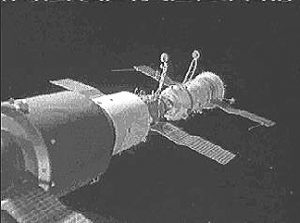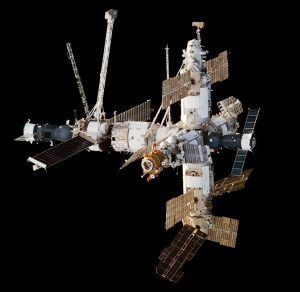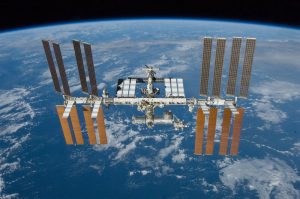 We all know about the International Space Station these days, but any previous space stations were not really very well known…at least I didn’t know much about them. The United States and Russia have been in competition for years, and over far more than the space program, but it was one area that they carried on a heated competition over. It seems like one or the other was always a little bit ahead, but there were a few places that Russia definitely beat the United States. One such area was the Space Station.
We all know about the International Space Station these days, but any previous space stations were not really very well known…at least I didn’t know much about them. The United States and Russia have been in competition for years, and over far more than the space program, but it was one area that they carried on a heated competition over. It seems like one or the other was always a little bit ahead, but there were a few places that Russia definitely beat the United States. One such area was the Space Station.
On April 19, 1971, the Soviet Union (Russia) launched Salyut 1 (English translation: Salute 1). It was the first space station of any kind. More stations followed in the Salyut program, and there are parts of that space station program that are still in use on the International Space Station today. Salyut 1 originated as a modification of the military Almaz space station program that the Soviets were developing at that time. After the landing of Apollo 11 on the Moon in July 1969, the Soviets began shifting the primary emphasis of their manned space program to orbiting space stations, with a possible lunar landing later in the 1970s if the N-1 booster became flight-worthy (which it didn’t). I suppose that since the moon landing had already happened, they decided to  focus their efforts on something they could be first at. It was the perfect motivation for the space station program…a desire to one-up the United States Skylab program, which was already in development. The basic structure of Salyut 1 was adapted from the Almaz with a few modifications and would form the basis of all Soviet space stations through Mir.
focus their efforts on something they could be first at. It was the perfect motivation for the space station program…a desire to one-up the United States Skylab program, which was already in development. The basic structure of Salyut 1 was adapted from the Almaz with a few modifications and would form the basis of all Soviet space stations through Mir.
Several military experiments were nonetheless carried on Salyut 1, including the OD-4 optical visual ranger, the Orion ultraviolet instrument for characterizing rocket exhaust plumes, and the highly classified Svinets radiometer. Construction of Salyut 1 began in early 1970 and after nearly a year, it was shipped to the Baikonur Cosmodrome. Some remaining assembly work had yet to be done and this was completed at the launch center. Launch was planned for April 12, 1971 to coincide with the 10th anniversary of Yuri Gagarin’s flight on Vostok 1, but technical problems delayed it until the 19th. The first crew launched later in the Soyuz 10 mission, but they ran into troubles while docking and were unable to enter the station; the Soyuz 10 mission was aborted and the crew returned safely to Earth. Its second crew launched in Soyuz 11 and remained on  board for 23 days. This was the first time in the history of spaceflight that a space station had been manned, and a new record in time spent in space. This success was, however, overshadowed when the crew was killed during re-entry, as a pressure-equalization valve in the Soyuz 11 re-entry capsule had opened prematurely, causing the crew to asphyxiate. After this accident, missions were suspended while the Soyuz spacecraft was redesigned. The station was intentionally destroyed by de-orbiting it after six months in orbit, because it ran out of fuel before a redesigned Soyuz spacecraft could be launched to it. Space stations have come a long way since that first station, but the Salyut 1 will always have the place of honor as the very first one.
board for 23 days. This was the first time in the history of spaceflight that a space station had been manned, and a new record in time spent in space. This success was, however, overshadowed when the crew was killed during re-entry, as a pressure-equalization valve in the Soyuz 11 re-entry capsule had opened prematurely, causing the crew to asphyxiate. After this accident, missions were suspended while the Soyuz spacecraft was redesigned. The station was intentionally destroyed by de-orbiting it after six months in orbit, because it ran out of fuel before a redesigned Soyuz spacecraft could be launched to it. Space stations have come a long way since that first station, but the Salyut 1 will always have the place of honor as the very first one.


Leave a Reply